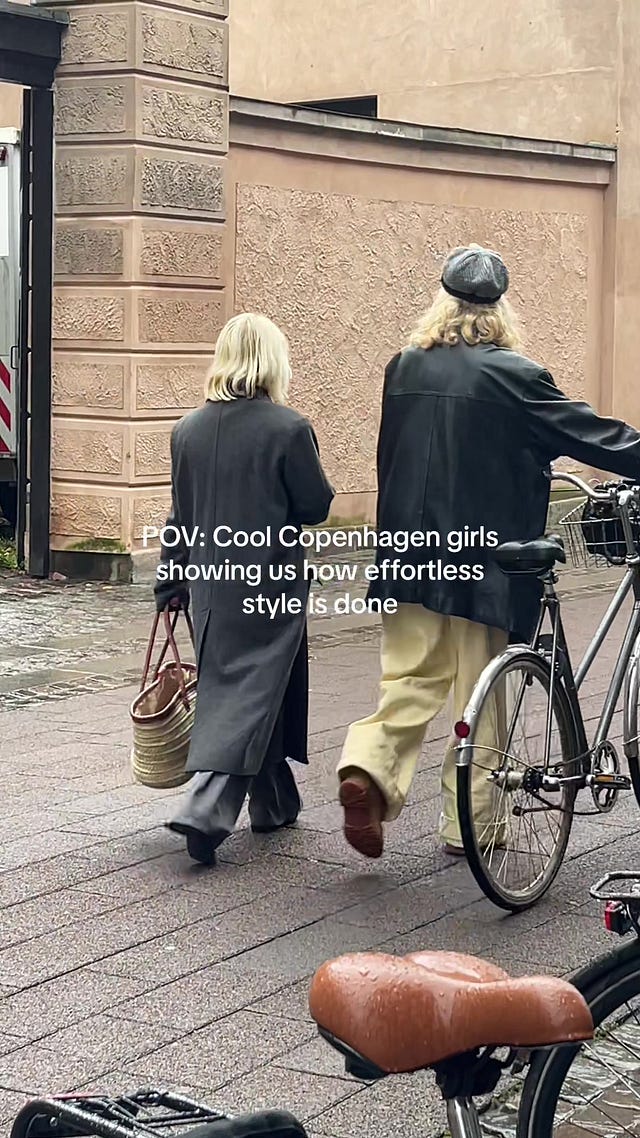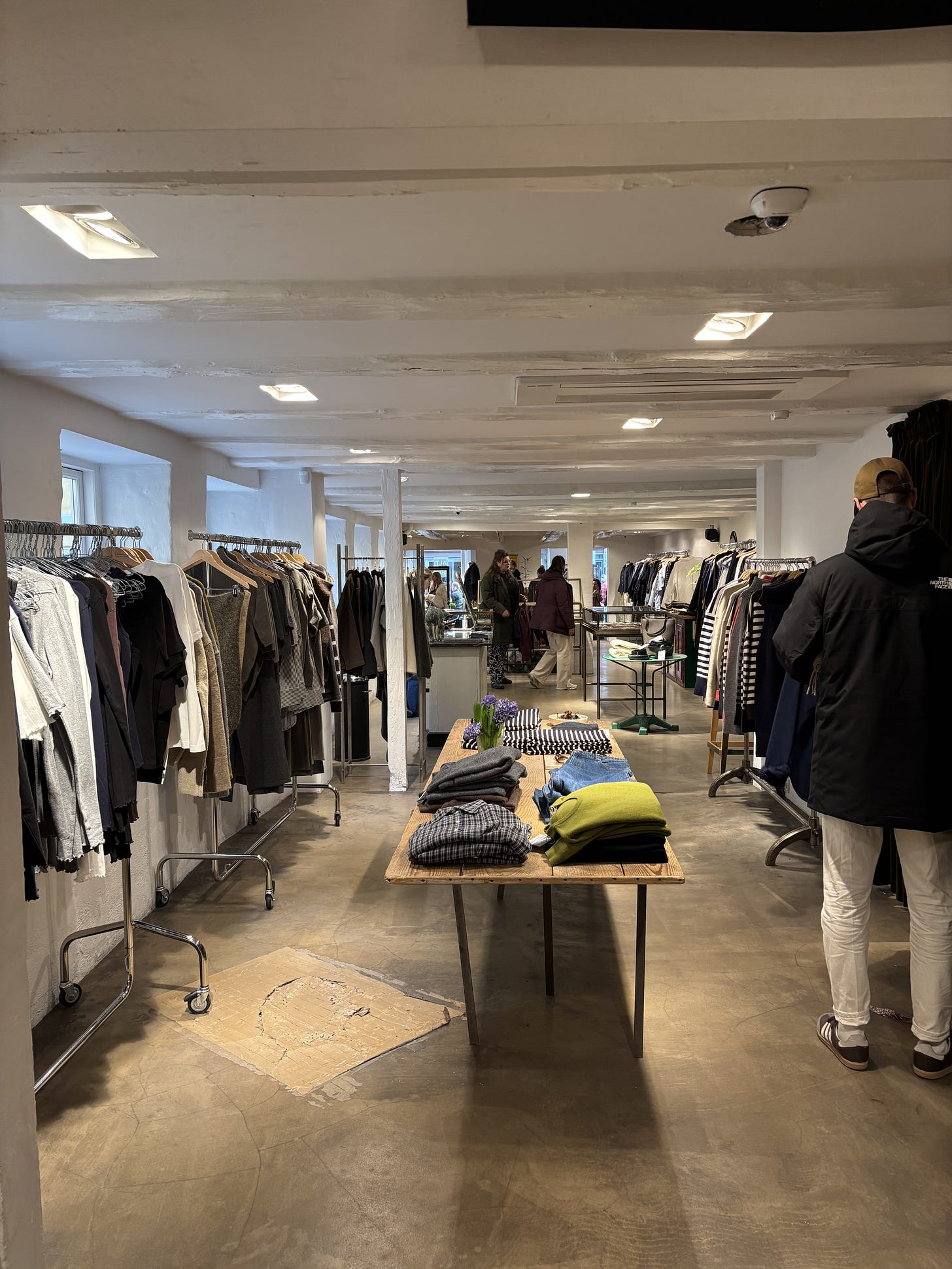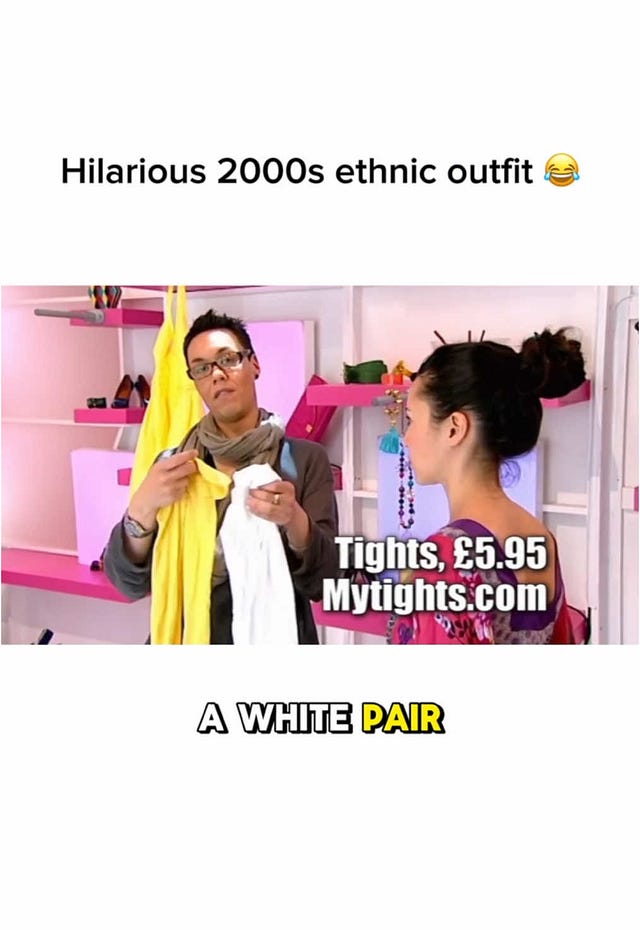At the beginning of the month I took a quick trip over to Copenhagen for one night with my friend Anna. It was around New Years we realised that in our seven years of friendship we’d never taken a trip away together just the two of us, and we decided that in 2025 that needed to change. In true organised Anna fashion, she did some quick research and found us cheap flights to Copenhagen and a night in a central hostel for the first weekend of March.
In the lead up to the trip I had heard that people in Copenhagen are well dressed. Copenhagen fashion week has gained more traction over the last few years, and Copenhagen style has been having a mainstream moment for well over a year now. London girlies have been obsessed with Ganni for a hot minute, and you can’t get away from those oversized peplum bow tops no matter which high street clothing shop you walk into. My Pinterest page is also rife with Scandinavian style inspiration – relaxed silhouettes, the perfect layered ensemble, and dark structured overcoats. So I was certainly going on this trip with the preconceived view of how people would dress.
But even when I was there in person, I couldn’t get over quite how stylish everyone was. I found myself twisting around whilst walking down the street, trying to drink in everyone’s outfits for as long as possible and mentally note down what I liked about it to inspire my own evolving wardrobe.
Initial observations
The Copenhagen style definitely speaks to me with its relaxed comfort, chic colour coordination, and emphasis on good outerwear. I am such a sucker for a structured jacket or an oversized 90s coat. Long wool overcoats in either black, blue, or charcoal, and oversized puffa jackets in black, brown, or dark green appeared the most popular outwear choice from my brief observations. But an even bigger take away for me was how well people’s clothes fit them.
Anna made the astute observation that we hadn’t come across a single Primark or Danish equivalent in the city centre. The worst fast fashion culprits we saw were two H&Ms and a Zara. There were several of the mid-high range high street brands – & Other Stories, ARKET and COS. It was designer brands that seemed to dominate, and every shop we walked into felt curated and clean, designer or not. There wasn’t excessive stock out on the shop floors, rails weren’t rammed into every available space, and one store even had a small statue displayed in the changing area.
We visited the vintage handbag store Collector’s Cage, which I had heard about online. The bags in this store were precisely hung up across plain white walls, categorised by designer and colour. The whole place had been put together to feel more like an art installation at the Design Museum than a second hand store.
Clothing culture
A quick google into Danish style sees the term ‘high-quality’ pop up several times as one of the key characteristics, providing an explanation as to why the fabric of everyone’s coats fell so perfectly… they’re not wearing 100% polyester imitation wool.
I wouldn’t say it’s the norm to spend on quality clothing in the UK unless you’re deeply into fashion, or have the income that it isn’t a splurge. I don’t think we’re an unfashionable lot, but Primark certainly rules the high streets and Shein has become the master of online orders. Good quality feels like an ideal to one day aspire to.
Naturally, economic factors play a big part in this. I apprciate that differing financial situations always influence what people spend their money on, and Copenhagen is one of the biggest financial capitals of Northern Europe, plus it’s known for having a high cost of living. It doesn’t take a genius to deduce that the people who live there will have more disposable income to spend on clothes and appearance.
For the average person, it’s only getting harder to build a quality wardrobe. If you have a remote interest in fashion, you’ll know by now that the Shein-effect has influenced even the most reputable brands. (In fact, there’s a really good video looking into this from More Perfect Union, which I’ll leave here. Although it is American, a lot of the brands looked at are global.) Manufacturers now tend to skimp on details like zips and finishings, and garments often have a higher content of man-made fabrics to keep costs down. The boom of ultra cheap fashion combined with easy purchasing through the internet has meant people can buy more clothes with less money now.
Something which highlighted this so apparently to me, was this clip from Gok Wan’s 2000s show Get The Looks For Less. Fashion and umm… music choices aside, the shoes he features in this outfit are £60, from Topshop! It’s wild to me that Topshop were selling heels for a whopping 60 British pounds in the 2000s. (Roughly £90-£100 adjusted for inflation) The price for Topshop shoes now sits in the range of £20-£40. When I see that, it’s no wonder our perspective on how much is reasonable to spend on clothes has dropped.
A leaf out of Copenhagen’s book
All of this has made me consider my own spending habits on my wardrobe. Whilst I’ve never shopped at Shein and I try to consider garment composition when purchasing items, I know I’ve always been happier to spend on certain items than others. I think all the shoes I’ve bought in the last five years have cost somewhere around the £80 mark, and that’s usually because I’ve caught them on sale at some point before adding to my basket. When it comes to tops and jeans, I’m a little more reluctant to fork out on one item, even if it’s something I really love. I put this down to feeling that there are more gaps in my collection of tops and jeans than there are in my shoe collection. I’m not so quick to pay £36 for a basic long sleeve (the price from Copenhagen brand Organic Basics) when there are about ten different tops I also want to add to my wardrobe. Although this has resulted in me buying cheap tops that are fully polyester, or jeans that sit dormant at the bottom of my wardrobe because they don’t fit quite right.
After visiting Copenhagen, I definitely want to shift my mindset to dedicating myself to saving towards the items I would like. Trust me, I’m not expecting to ever fit in with the Copenhagen fashion scene, but I hope to capture a bit of their effortless style with pieces that fit right and hang better to ultimately feel more confident in myself, since that’s what fashion is all about..








